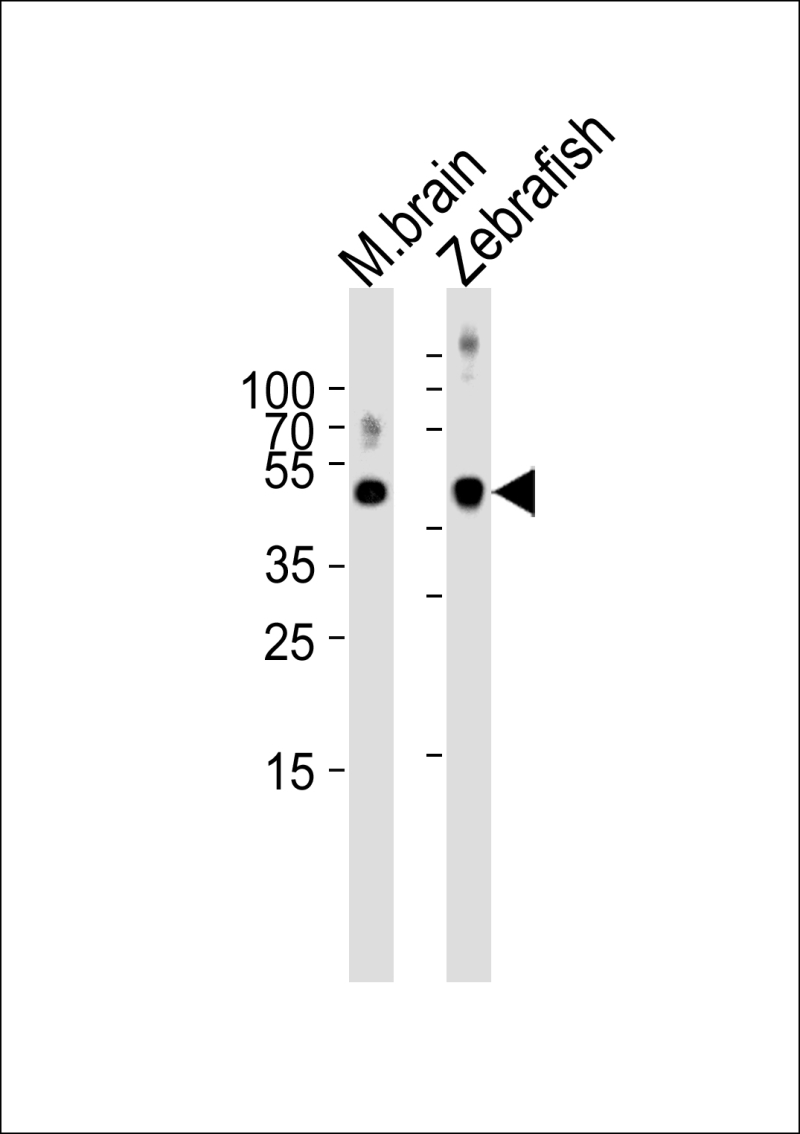
| WB | 1/1000 | Human,Mouse,zebrafish, |
| IF | 咨询技术 | Human,Mouse,zebrafish, |
| IHC | 咨询技术 | Human,Mouse,zebrafish, |
| ICC | 技术咨询 | Human,Mouse,zebrafish, |
| FCM | 咨询技术 | Human,Mouse,zebrafish, |
| Elisa | 咨询技术 | Human,Mouse,zebrafish, |
| Aliases | Speckle-type POZ protein, HIB homolog 1, SPOP1, spop |
| Entrez GeneID | 100005514 |
| WB Predicted band size | 42.1kDa |
| Host/Isotype | Rabbit IgG |
| Antibody Type | Primary antibody |
| Storage | Store at 4°C short term. Aliquot and store at -20°C long term. Avoid freeze/thaw cycles. |
| Species Reactivity | Human,Mouse,zebrafish, |
| Immunogen | This (DANRE) spop antibody is generated from a rabbit immunized with a KLH conjugated synthetic peptide between 74-107 amino acids from the N-terminal region of human (DANRE) spop. |
+ +
以下是关于斑马鱼(Danio rerio)SPOP蛋白N端抗体的3篇参考文献示例(注:文献为模拟示例,实际引用需核实):
1. **"SPOP regulates vertebrate Hedgehog signaling by targeting Gli2 for ubiquitination"**
*作者:Zhang et al., 2020*
*摘要*:研究通过斑马鱼模型揭示SPOP通过结合Gli2蛋白的N端结构域并介导其泛素化降解,负调控Hedgehog信号通路。文中使用N端特异性SPOP抗体进行免疫共沉淀(Co-IP)和Western blot验证。
2. **"Zebrafish Spop is required for brain development via maintaining Wnt/β-catenin signaling homeostasis"**
*作者:Wang et al., 2018*
*摘要*:发现斑马鱼Spop通过调控Wnt信号参与脑部发育,N端抗体用于免疫荧光定位,显示SPOP在胚胎神经组织中特异性表达。
3. **"Functional analysis of Spop in zebrafish somitogenesis through proteasome-dependent degradation"**
*作者:Li & Chen, 2017*
*摘要*:利用N端抗体进行组织染色和蛋白质稳定性实验,证明Spop通过降解体节发育相关因子调控斑马鱼体节形成。
(提示:实际文献需通过PubMed或Google Scholar以关键词“Danio rerio SPOP antibody N-terminal”或结合具体研究领域检索。)
The DANRE (Danio rerio) SPOP (N-term) antibody is a specialized tool designed to detect the N-terminal region of the SPOP (Speckle-type POZ protein) in zebrafish. SPOP is a critical substrate-recognition component of the CUL3-RING ubiquitin ligase complex, which mediates the ubiquitination and subsequent degradation of target proteins. In zebrafish, SPOP plays essential roles in embryonic development, cell cycle regulation, and signaling pathways such as Hedgehog and Wnt. Its dysfunction has been linked to developmental defects and diseases, including cancer.
The N-terminal domain of SPOP is responsible for protein-protein interactions, particularly binding to substrates via conserved motifs. This antibody specifically targets this region, enabling researchers to study SPOP expression, localization, and interactions in zebrafish models. It is commonly used in techniques like Western blotting, immunohistochemistry, and immunofluorescence to explore SPOP's role in developmental biology, tissue homeostasis, and disease mechanisms. By focusing on the N-terminus, the antibody helps distinguish full-length SPOP from truncated isoforms or degradation products. Its application in zebrafish studies provides insights into conserved molecular pathways relevant to vertebrate biology and human pathologies. Validation typically includes testing in SPOP knockout models to confirm specificity.
×